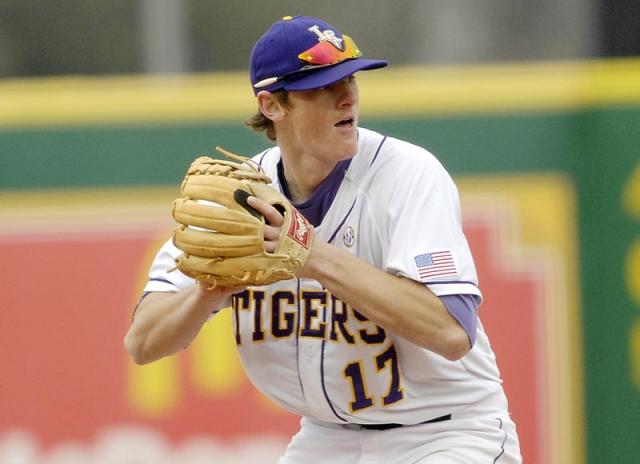
Upon his hiring, Skip Bertman once gave Paul Mainieri a bit of advice that’s stuck with the LSU coach for years: not every junior college player is going to be Brandon Larson.
Larson arrived at LSU in 1997 after two years at Blinn Junior College only to mash 40 home runs and lead the most powerful lineup in college baseball history to a national championship. History shows hitting the ground running to that degree is much more the exception than the rule.
JUCO signees have the benefit of having played a year of two of college baseball compared to true freshmen, but in most cases there’s still an adjustment period to the Division I level that must be negotiated.
“It doesn’t always happen right away for junior college kids,” Mainieri said. “Sometimes it takes them a while to get used to it. A lot of JUCOs, there’s nobody in the stands and you’re playing on glorified high school fields. All the sudden you’re playing in front of 10,000 people and facing 94 miles per hour. That’s a big adjustment, even for a kid that has a couple of years of college baseball under his belt.”
It certainly seems to have been the case for LSU catcher Hunter Feduccia.
Feduccia looked like one of LSU’s best players during spring practice, winning the starting catching job so convincingly that one of his competitors left the program over the winter. That promise didn’t immediately translate into success when the games counted for real.
Complicating matters further, Feduccia dealt with broken bones in his hands on not one but two occasions. His offensive numbers lagged during the first half of the season and he became a liability behind the plate, allowing a troubling six pass balls in his first 25 games played.
It’s the nature of life as a catcher that people only tend to notice them when things are going wrong, but Feduccia has quietly cleaned up his deficiencies behind the plate. He’s only been charged with one pass ball in his last 19 games, which constitutes a major stride defensively, and has always possessed a strong throwing arm.
“You never notice a good catcher,” Ochinko said. “When you’re noticed, then you’re usually not doing what you need to do. It comes with the territory. We just had some sit downs and we’ve paid more attention to his blocking mechanics. It’s a focus thing. Sometimes your hitting bleeds over to your catching, and that’s something you can’t do. But he’s been playing well of late.”
“He’s played much better of late, and I think he understands the standards that we hold him to,” Mainieri added. “At one point, his catching was unacceptable. Now, I think his catching has become much more acceptable.”
Feduccia’s offense has followed suit of late, particularly with runners in scoring position. Over the past six games, Feduccia is 7-for-19 (.368) with eight RBI and two runs scored while drawing five walks. He’s driven in at least one run in five of those six contests.
An uptick in confidence has been beneficial after a tough stretch in which everything seemed to go wrong, and the tentativeness that comes from playing with broken bones in a hand obviously didn’t help matters.
Feduccia has also worked with Ochinko to simplify his mechanics at the plate, eliminating his exaggerated leg kick and making his swing more compact through the hitting zone.
“I’ve worked a lot on making my swing simpler, and I’m just seeing the ball better, too,” Feduccia said. “I’m getting my confidence back and starting to come along.”
Traditionally speaking, most catchers tend to see their offensive numbers wane as the season goes on due to the wear and tear that comes with the position. But Feduccia, like Mike Papierski before him, seems to be heating up with the weather for LSU.
“It makes a world of difference for our team,” Mainieri said. “I hate to put a percentage on it, but it makes an enormous difference for our team.”




Be the first to comment